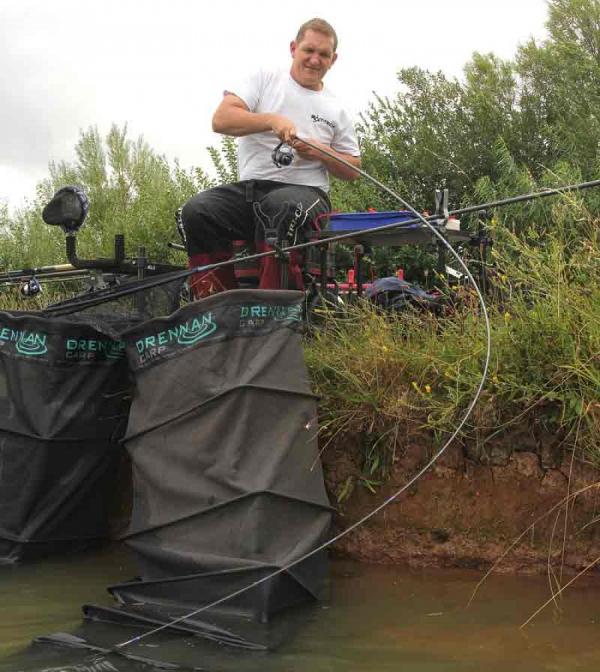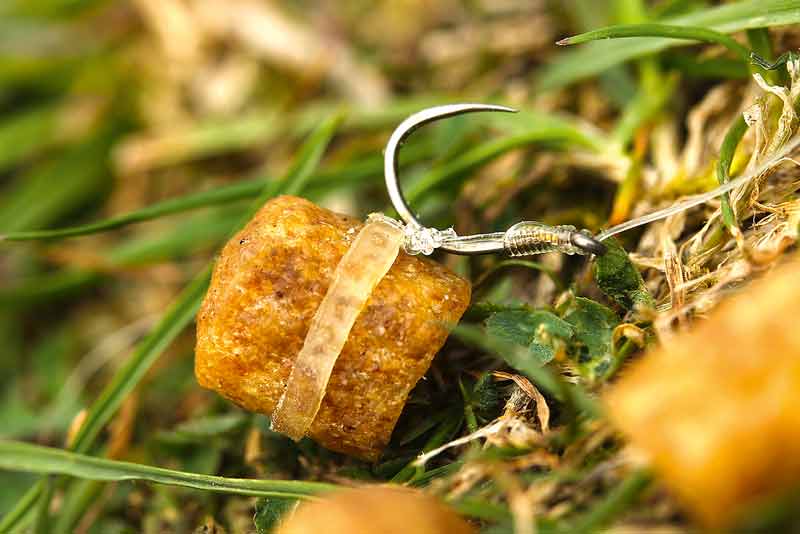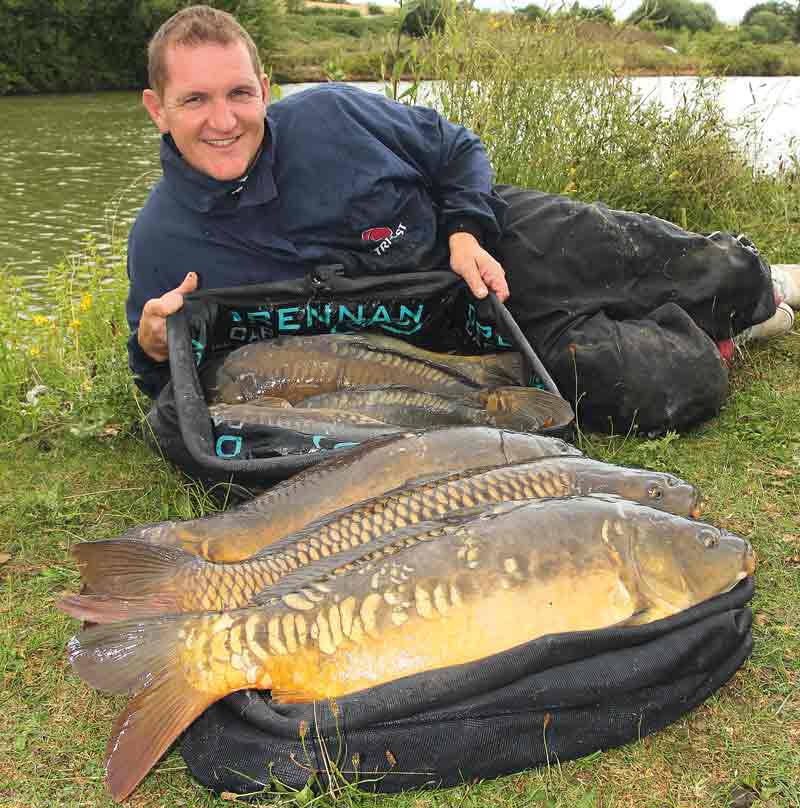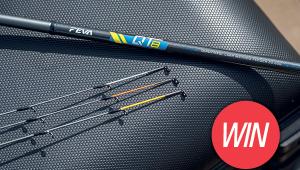Fortune Favours The Brave

Dave Roberts explains the daring pellet-waggler tactics that you can use to catch the bigger specimens needed to ramp up your tally at the end of a match!
For anyone developing a commercial fishery these days, the blueprint seems to revolve around snake or canalised style lakes, and such venues seem to be appearing more frequently in my match calendar.
Venues such as Lindholme Lakes, Messingham Sands and The Glebe, to name just three, all feature lakes that are canalised in some way, but generally not the traditional 14m-wide uniform versions. A lot of these venues are wider, with far banks that are quite often just out of pole reach or beyond to about 25 metres.
Spooky Fish
Experience has taught me that on these venues the fish tend to back off to the far bank in match conditions. For this reason, methods to fish tight over generally rule the roost. When faced with such a swim the first choice is usually a short feeder rod clipped up to chuck a Method or pellet feeder.
However, it is very rare when setting up to tackle such a swim that I won’t also set up a pellet waggler. On its day it can outfish static feeder tactics.
The sight of far-bank vegetation can put many anglers off, but experience has taught me that if you perfect your casting, and are prepared to lose an odd hooklength, fortune really can favour the brave.
Tackle Challenge
I have come to a venue with a peg that features all of the above challenges. Here on the specimen lake at Lower Broadheath Fishery (aka The Jam Factory) the far bank is about 22 metres away with plenty of vegetation.
The lake is full of big carp, as you would expect with a specimen lake, and although they can be caught away from the island, under match conditions the only place they will feed confidently is on the shallow far-bank shelf. By pinging 8mm pellets across you can usually see when the fish are there. These are very catchable but being big fish they present many challenges.
The first thing I have to consider is the gear I’m going to need. Rods will be the new Tri-Cast Trilogy Commercial Waggler. I like the 11ft 6in versions for this sort of work. Everyone is different but I’m not into very short rods for waggler fishing because I like a fast line pick-up on the strike. A lot of bites will come as soon as the float hits the water and a lightning-quick strike is required because these big wary fish will spit the bait out in a millisecond at the first sign of resistance.
I use the Preston PC-R 3000 reels for all my pellet-waggler work. They’ve got great winding speed and a very smooth clutch, which I always have set despite still using the back wind (I’m a bit weird like that).
The line I use simply depends on the size of fish I’m likely to encounter. I’ve experimented with a few in recent times and keep coming back to Maxima. While the performance might not be that of more hi-tech lines, its durability is exceptional and when faced with casting to brambles and suchlike, I need something that will take a battering.
Normally 0.17mm diameter would cover most things but knowing the size of fish in this venue I have stepped up to 0.20mm. If I were fishing a more F1-stocked venue, then I’d have no problem fishing 0.15mm.
On the subject of diameters, my hooklengths for this style of fishing are vitally important, and I’m not talking about fish being line shy. Most of my big carp pellet-waggler fishing would feature my favoured 0.19mm Reflo Power hooklength. I don’t generally buy into fish being line shy; it’s more about breaking points of line.
When you’re fishing to vegetation like this peg, at some point (if you’re going to get close enough) you will snag up. Depending on the vegetation (brambles being the absolute worst) a break in the line can occur and the last thing I want is the far-bank vegetation looking like a Christmas tree decorated with my wagglers. By using a slightly lower diameter hooklength I ensure that when a snag is encountered the hooklength breaks first.
That all might sound haphazard, but remember that this method is about being brave. You won’t get as many bites by dropping short so you have to accept it as part of the game. Just hope you’re not surrounded by people who will take the mickey when you do snag up!

Try feeding 4mm or 6mm pellets…

Try feeding 4mm or 6mm pellets…
Waggler Choice
Standard Styrofoam wagglers are fine for this and I particularly like the DH Angling ones. For the distance I’m fishing, 2SSG is perfect. The float needs to be short and dumpy and land without diving, because it’s hopefully going to be landing on feeding fish.
I find conventional shotting helps with a softer landing but I usually set up a loaded float as well for variation in the noise made when they hit the water.
Accurate Casting
There’s a lot of technique involved in fishing accurately, not least in the casting department. There are two ways to achieve the perfect cast and they both come into play on most sessions. The first is clipping up. Now this may sound simple enough but in reality it’s a lot harder than it is with a Method feeder. This is mainly because the float is a lot lighter and also due to the length of line hanging below the float.
As the line hits the clip the hook bait naturally kicks forward and lands beyond the float. The hook and pellet are landing maybe 30 centimetres past the float and while your float lands clear of snags, the hook bait plants firmly in the brambles. When you get it right, though, it’s extremely accurate, and when fish are reacting to falling bait it’s deadly.
What I find best is to start by casting shorter and get braver as the session progress. The two main problems with this cast are, firstly, the pellet is generally falling away from the far bank, thus the window to get a bite is very short. Secondly, to achieve the accuracy of clipping up, a slightly bigger float is required, which can have a detrimental effect on feeding fish.
When the fish really start feeding on this method they tend to push further up the far bank into the shallow water until they’re sometimes mouthing the far bank. This is pretty unavoidable but creates a problem with a clipped-up rig. For one, your bait is generally not falling to where the fishes’ mouths are. Also, once it has sunk, it is often in a place where tails and fins can give false indications, leading to foul-hooked fish. Fish the size of the ones we’re catching are not fun to hook in the tail… believe me.
In this instance I tend to favour a lighter rig with a shorter hooklength and really hit the far bank with the float so that the pellet falls towards the far bank. Mud banks are a dream for this sort of fishing because you can cast with confidence without snagging up. When the fish are creeping up the bank this means the float isn’t landing on top of them and the pellet is falling in the direction the fish are heading.
Casting this rig really takes finesse and again it’s about balance. The weight of the float has to be enough to float it through the air and land bang on. If you’re having to whip the float across it’s not going to be accurate. It really is just trial and error but as the session progresses the accuracy gets better and better.
I actually watch the float through the air and after a while instinctively know where to feather the rig down. Two things that affect this are wind and sun. It’s not great watching a float through the air if the sun is high or in your face, and obviously wind will affect accuracy when you’re just floating the rig across.

This tactic has a habit of sorting out the bigger carp!
Seeing And Hitting Bites…
Fishing this way will see your hook bait on the bottom but you have to watch out for signs that something isn’t right. Missed bites, foul-hookers and pulling out of hooked fish are all signs that you’ve got too much line on the bottom. The fish are generally picking the bait up and ejecting it before you’ve had a chance to strike. Just moving the float a couple of centimetres shallower can transform your catch rate. So often, getting fish in the peg isn’t the hard part.
Despite my confidence in the method, a match attack would usually always begin on feeder but pinging pellets over the top will give you good indications, in the form of liners, as to how the fish are in the peg and how they are reacting to the feed.
Unlike conventional shallow waggler fishing this method can work well in winter. It doesn’t just have a place on canal-based venues either. If you find yourself on a corner of a lake with a bank to cast to, it can be just as effective.
Expert Pellet-Waggler Tips:
Try varying feeding. I usually start by pinging three or four pellets at a time, but try singles or a couple of decent ‘pouches’ to make some noise.
If you can reach, try feeding 6mm or even 4mm pellets over the top instead of 8mms. This can transform a peg that has gone quiet.
Try a big 11mm pellet or cube of meat as a change/target bait on the hook.
Try not feeding and just casting for a while. Set a time of, say, 10 casts, just to see if anything will come to the noise.
Have a box of different floats by your side to try. It takes seconds to change a float and it could be the landing noise that’s either putting the fish off or making them come searching.
Be aware of fish dropping back into deeper water later in the match. You’re unlikely to catch in one spot all day and if they’re feeling pressured the carp may sit back and take the odd pellet dropping short.
Rest it! If things have gone quiet, try just leaving it be for a while to coax fish back in.
Dave’s Pellet-Waggler Tackle
Rod: Tri-Cast Trilogy Commercial 11ft 6in waggler
Reel: Preston Innovations PC-R 3000 Reel
Reel line: Maxima 5lb (0.20mm)
Hooklength: Preston Innovations Reflo Power 0.17mm
Hook: Guru Pellet Waggler, size 16
Floats: DH Angling Pellet Waggler (2SSG) and Middy Magic Ball Waggler (6g)
Like what you see?
Or buy a single issue
- Log in or register to post comments









